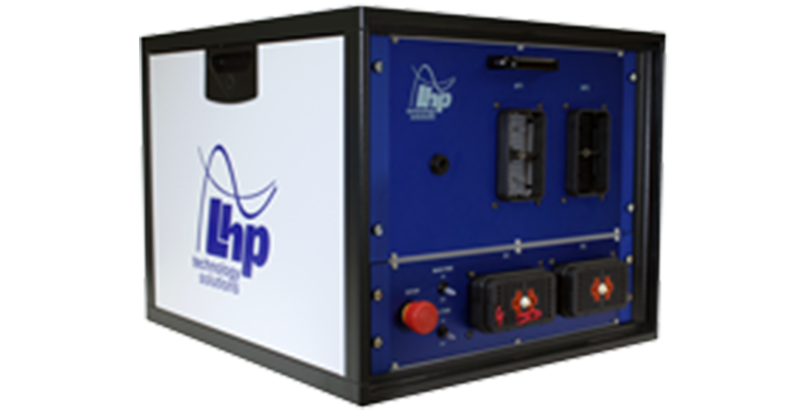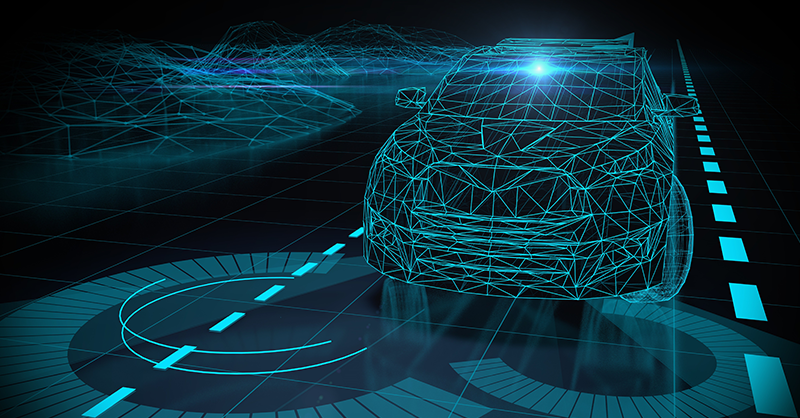Integrating Today’s Top Technology to Power the Research of Tomorrow
Today, automotive researchers and engineers are constantly evolving their research to optimize propulsion system control technologies for the...

Real-time alerting can be thought of as both a concept and a loose set of rules within the discipline of analytics. Real-time alerting provides constant updates of trends and changes in monitored resources, whether within actual software or in a system that is operated by software. Typically, the power of real-time alerting is implemented by creating systems or software components that continually monitor a resource (whether a camera, a sensor, or a field in a database). The real-time aspect is of utmost importance when technicians and developers are creating a new system, testing an existing one, or using it in the field, and require second-by-second trend reporting of critical data.
Real-time alerting, as a concept within analytic software design, provides great value to numerous applications and industries worldwide. From automotive telematics (the remote monitoring and communications protocols of vehicles and other relevant assets) to financial markets, to smart factories and industry 4.0 applications, the ability to receive and react to events as they occur is of the highest importance.
Real-time alerting exists in relation to event-driven logic. The two concepts are often used together, but the relation can be as simple as:
Event-driven logic, the logical structure of software that provides immediate and definite responses to changes in the status of a resource, is currently one of the best solutions for rapidly reacting to changed conditions communicated by real-time alerting. Event-driven logic is flexible enough to be utilized in a vast range of situations because its input and response typologies are wide and varied. For this reason, in many applications, when real-time alerting is needed, event-driven logic is one method that programmers and developers choose to help implement it.
Developers have access to multiple software suites custom-tailored to specific applications for providing real-time alerts. Conversely, they can create or insert software components into existing software to provide real-time alerting functions, depending on the requirements of the application. The ways in which real-time alerting can be implemented are nearly as varied as the situations and solutions this concept applies to. However, regardless of how it is integrated into a system or software, what real-time alerting does very well is to provide nearly instantaneous responses and tracking of changes and trends for a vast range of industrial and academic applications worldwide.
These benefits easily translate to applications as diverse as timing, scoring, and analyzing athletic events, instantaneous monitoring of a patient’s vital signs in healthcare settings, or keeping a rocket on its optimum flight path. In the automotive realm, real-time alerting is utilized frequently; Software-Defined Vehicles (SDVs) depend on real-time alerting for everything from providing tactile steering feedback to a driver, to rerouting that driver’s morning commute based on satellite information, to communicating tire pressure warning messages. Real-time alerting, integrated with (sometimes multiple) additional systems, enables and improves products across a wide spectrum of industries.
Real-time alerting gives the earliest possible notifications of high-impact events to operators, technicians, developers, and organizations, depending on application and need. These applications might include cybersecurity threat assessment; monitoring or gauges for engine, motor, or battery temperature; or a security system’s sensors.
While “real-time” certainly should be taken to mean as close to the actual instant as possible (within milliseconds), an “alert” is not always necessarily an “alarm.” When we say “alerting,” we are not speaking only of a response to trouble or unwanted distractions. Real-time alerting is heavily utilized in such things as alarm systems or for notifying machinery operators (including drivers of software-defined vehicles) that the system has detected trouble of some kind. However, real-time alerting also works well for messages of status changes within systems, of either “good” or “bad” news, or for simply sending constant operational updates.
Typical real-time monitoring components or systems might include functional elements such as:
In addition to basic functional elements, real-time alerting systems may include integrated iterative improvement loops. These feedback loops analyze data from the system’s history to identify missed signals, false positives, or other issues, and set up processes to iteratively clarify the system’s rules that govern alerting, improving the performance of the system as time goes on. In addition, depending on the application, real-time alerting systems may be integrated with additional incident resolution or management software. These can include more complex alert messaging, tools for analysis and incident response workflow, or artificial intelligence (AI) modules for option sorting and decision-making.
Real-time alerting can be found throughout the broad spectrum of analytics software applications, including:
LHP Analytics & IoT builds custom solutions for organizations in a wide and varied range of industries. The solutions that our customers require are, much like the organizations, quite disparate from one another, and require a custom approach tailored for each use case.
For a full digital or Industry 4.0 transformation of an organization or its operations, we heavily leverage the continuous monitoring, customizable thresholds, and rule-based detection aspects of real-time alerting. These aspects help us:
These cases typically benefit from analytics integration, for deeper insights into the operation of the entire new digital system.
When LHP builds a telematics solution, whether in an automotive context or as a component of an automated factory or other smart resource, we rely on real-time alerting to monitor and report nearly every aspect of the whole project. If we speak only of automotive solutions for a moment (given that modern software-defined vehicles are a rich source of examples), there can be many ECUs actively monitoring, pulsing out information, logging events and creating data. The telematics system must monitor, differentiate, analyze, and send reportage or alerts on input from all the various ECUs in the vehicle to not only optimize the balance between propulsion power and efficiency and fuel or charge consumption, but also to factor in location, route deviation, and thousands of other parameters. Telematics can also encompass machine learning and predictive forecasting of route data, an important aspect sure to become more important as manufacturers continue working to perfect their advanced driver assistance systems (ADAS) and autonomous driving technology.
Real-time alerting, especially coupled with the power of event-driven logic and architecture, is a crucial element in modern data operations, monitoring, and analysis. Information can come from cameras or sensors or any of a vast array of automotive electronic control units. One major strength of real-time alerting is that it can be implemented in many ways, from automotive traction control to remote tool breakage notifications in a smart factory. Real-time alerting can be utilized to monitor and analyze resources, conditions, and events, and is a major tool the LHP Analytics and IoT team uses for data management, analysis, and complex event processing in smart and connected applications for customers across multiple industries.

Today, automotive researchers and engineers are constantly evolving their research to optimize propulsion system control technologies for the...

What is the Importance of a Data-driven User Experience in Automotive?

NI Drivven Powertrain Modules, Exclusively sold by LHPTS, an LHP division.